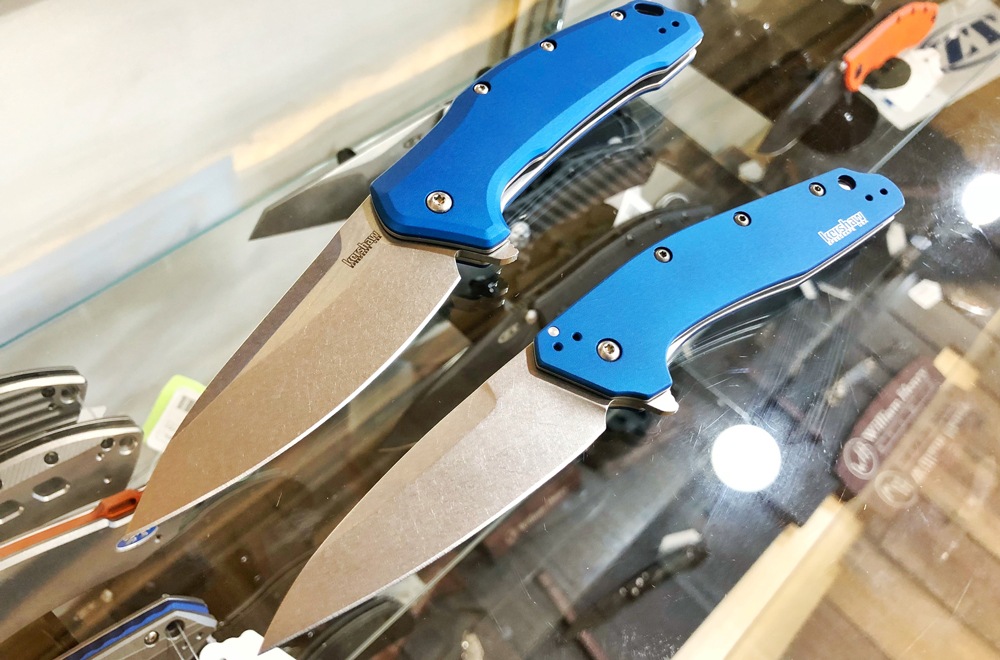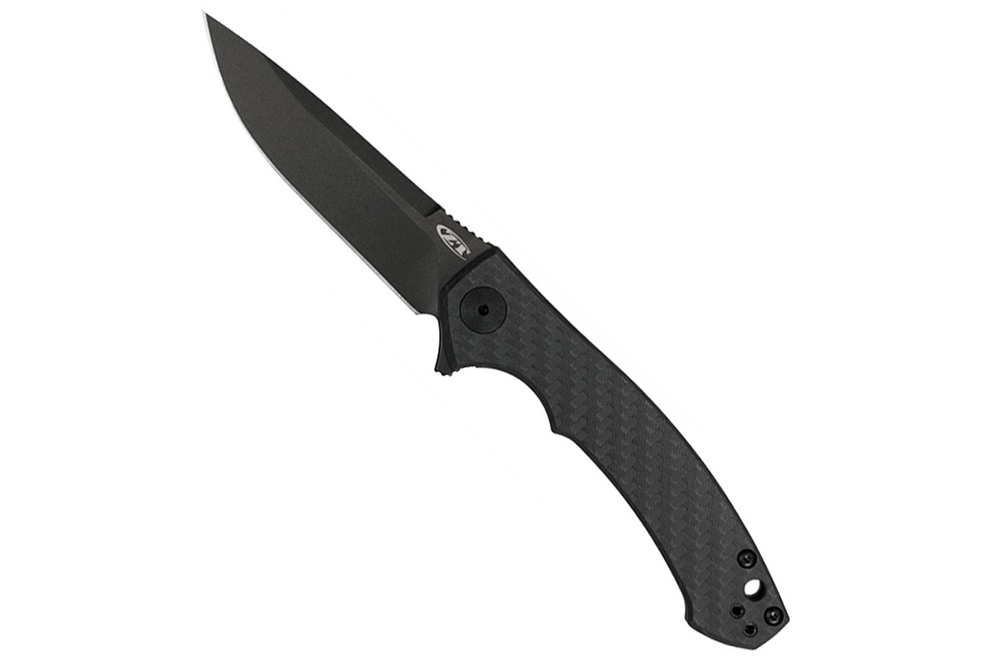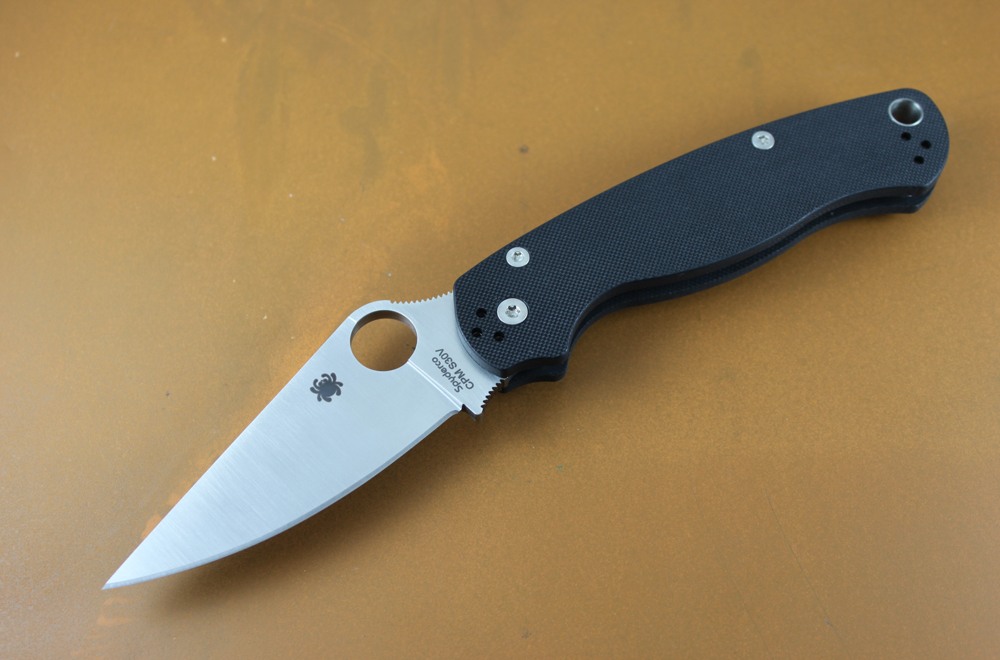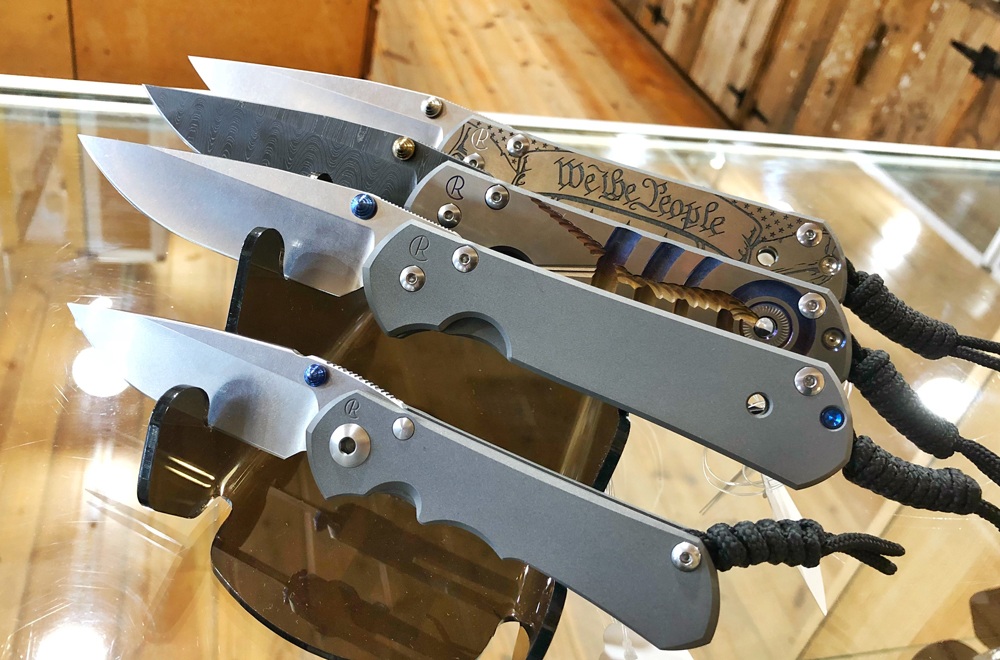
Understanding the difference between a $25 and a $300 EDC knife.
Top 10 things to consider when buying an EDC knife:
- Overall material quality
- Top-quality blade steel
- Maker/manufacturer and customer service
- Application
- Price point
- Type of lock mechanism
- Design for use
- Ergonomics
- Size and weight
- Ease of carry
Gun and knife enthusiasts know it to be true: A person can have a personal connection to an inanimate object, one that cuts or shoots, and particularly if it’s carried every day.

Getting ready for work in the morning, you grab your wallet, keys, phone and everyday carry (EDC) piece. Gun guys can tell a high-quality carry piece from trash and what works best for them, what they feel comfortable shooting, how it feels in their hands, which model, caliber and configuration suits their purposes, as well as what they’re most comfortable carrying.
Maybe that’s the key — what is comfortable, what feels right, like a good pair of jeans, a favorite T-shirt or a jacket that hangs just right. And all those things are personal items, familiar and comfortable. They are worn because they fit.
It might not always seem so obvious with knives, and price ranges for knives vary considerably. So how do you get the best everyday carry knife for your money? Will a $25 knife from a big box store suffice? Is there such a thing as a high-quality $25 knife, or does it become necessary to spend $100, $500 or $1,000 for a blade?
I guess you’d have to ask a knife guy — and you’re in luck. There happens to be as many knife enthusiasts as there are tactical knives, fixed-blade hunters and assisted opening folders with thumb studs, pocket clips and locking liners. There are also experts in the field, those willing to assist with choosing the right everyday carry folder or fixed blade for you.
Choosing The Blade For You
“Directing a customer to an EDC knife is somewhat like pointing them toward an everyday car,” says Mike Dye of New Graham Knives in Bluefield, Virginia. “Some think a base economy model suits them well, whereas others want a high-end luxury model. “Obviously, a good mid- or high-end blade steel is paramount,” Dye continued. “And the feel of the knife in the hand — it must fit the user. Different handle materials can make a world of difference in the feel of the knife. Micarta, G-10, smooth or worked titanium, stainless-steel, bone and stag — these choices are of a personal nature.”
Though Dye says everyone likes something different, there are keys to finding the right everyday carry knife. One tip, he notes, is to choose a knife that’s neither too small for the tasks it might encounter on an average day, nor one that’s too large to carry daily.
Matt Salazar, store manager for House of Blades, agrees, and he even has a suggestion as to blade length, saying a 3- to 3.75-inch blade is ideal for an EDC knife. He mentions modern blade steels, such as CPM S35VN or M390, as those that are more than adequate for everyday cutting tasks.

“Stick with a good, high-quality brand that has a track record of great customer service,” Salazar recommends. “G-10 and aluminum are great options as far as handle material goes, although titanium and carbon fiber are widely available if you want something a little more high-end.”
High End Or Affordable?
Dye says a $25 knife might be the perfect choice for a farmer, miner or auto mechanic who uses the knife for any task that comes up. “If broken or lost,” he states, “it’s easier to repurchase a $25 knife than it is a more expensive piece. For others who are less likely to overwork or ask a knife to do chores it’s not designed to do, a higher-end model with ‘prestige’ might be in order.”
“As for a high-quality $25 knife … ,” Dye continued, “yeah, they’re out there. Over 40 years ago, when I started selling pocket knives, the China-Made knives were a joke. That’s not the case today. Some factories in China are producing amazingly high-quality knives at popular prices.”
Dye says such companies as Kershaw and Spyderco (specifically in its Byrd line) market knives manufactured in China with great success. “Ontario and ESEE have great EDCs at a reasonable price,” he notes, “and they offer support for warranty issues.” When tasked with helping someone find the right EDC knife, Salazar always poses the question, “How long do you want the knife to last?”
“In my opinion,” Salazar said, “you’re going to be really hard-pressed to find a high-quality knife for $25. I will say that Kershaw makes great knives in every price point, but I’d also say that $75-$100 would get you an excellent EDC knife that should last you many years with proper use. You can certainly spend more if your budget will allow.”
Many steels in lower-end knives will not retain a sharpened edge for as long as high-quality blade steels, which means more frequent sharpening and a shorter life expectancy for a knife.
“Steel quality, in general, would be the biggest drop-off in opting for a lower-end knife,” Salazar explained. “Inferior edge retention is likely the most significant downfall when purchasing a budget knife. After all, it’s a cutting tool.”

High-dollar production knives, such as those available from Chris Reeve Knives, Hinderer Knives and Zero Tolerance, exhibit high-quality craftsmanship, better steel options and stricter quality control. “Look for solid lockup if it’s a locking folder, smooth action and overall quality construction,” Salazar recommended.
“Generally, when the customer has tired of the off-brands and low-end offerings at the big box stores, they come to me asking for a high-quality knife,” Dye added. “That said, most of our walk-in folks have a ceiling of around $50-$100, and there are dozens of excellent choices in that range.”
Tangible advantages to higher-end knives include titanium versus pot-metal knife frames, and handle materials such as Micarta, carbon fiber and natural bone versus molded and crude plastic grips.
“Fit and finish on higher-end knives are rightly expected to be superior,” Dye stated. “A customer will have a good experience with a knife that sharpens easily, cuts well and retains an edge. With high-end EDCs, you start to get into higher-quality frame materials, better steels with superior heat treating, and locking mechanisms that hold greater tolerances.”
“If possible, handle the knife before purchasing it,” he suggested. “Look for lack of blade play on folders, both horizontally and vertically, and examine lockup. Look at fit and finish. Well-made knives at any price will show well in those areas.”

In conclusion, Dye said, “I tend to steer customers away from fancy opening mechanisms, unorthodox locking mechanisms and knives that have obvious marketing gimmicks associated with them.”
Evaluating Knife Properties
Stainless-steel, as opposed to high-carbon blade steel, is a consideration for Julie Maguire and Ryan Thompson of Arizona Custom Knives.
“In order to be an EDC candidate, a knife should have a high-quality stainless blade,” Maguire said. There are more stainless-steels to choose from today than ever before. Do your research and choose the one that fits your cutting needs,” “Finding a knife with durable handle materials is also important,” Thompson added. “Titanium, G-10, Micarta and carbon fiber are all great options that hold up well in various conditions.”
Weight of the knife should also be a consideration in an EDC knife, according to Thompson and Maguire. “If a piece is too heavy, you will be constantly reminded of it as you go through your daily activities,” Thompson said. “A great EDC knife is one you forget about until you need it!”
“And the same applies for size,” he adds. “Try to choose a knife that’s just large enough to handle the cutting needs you’ll encounter in a normal day. Carrying a knife that’s larger than needed can become cumbersome and frustrating.”
When asked for the No. 1 thing to consider when deciding between a $25 and $300 knife, Thompson answered, “Quality, plain and simple — if you’re choosing to spend $300 on an EDC knife, you should expect superior handle materials, blade steel and craftsmanship.”
“A customer would be unrealistic to expect the same level of quality in a $25 knife that one should get in a high-end production or custom knife,” Thompson says. “As an example, certain handle material can cost more than $25 in and of itself.”

Other signs of high-quality knives include excellent workmanship throughout and added features such as an IKBS (Ikoma-Korth Bearing System) on folding knives or custom-made sheaths to accompany high-quality EDC fixed blades, Maguire says.
Some qualities to look for, she adds, are blade centering between handle halves on folders, overall fit and finish, secure lockup on folders, smooth opening/closing action and comfortable overall knife ergonomics. Gimmicks to avoid on an EDC knife include less-practical opening mechanisms and locking devices.
“There are incredibly creative opening, closing and locking mechanisms that unfortunately don’t translate well to an EDC cutting tool,” Maguire explains. “In general, if a knife can’t be opened, closed or drawn from its sheath with one hand, it probably isn’t a great fit for an EDC.”
“Consider how often you hold an item in your hand and realize you need your knife to cut, peel, open or trim that same object,” she proposes.
Buy From A Reliable Source
Where a customer buys an EDC can be just as important as what they buy, Thompson said. He suggests researching a manufacturer’s track record when buying a production knife, or to educate yourself about a maker’s reputation when considering a custom knife.
Jordan Saldana, general manager of American Edge Corp., suggests customers receive a more personal experience when they “shop small.” “At American Edge, we always try to find the best knife for the customer based on what they will be using the knife for, as well as the price range that he or she falls under,” he explains.

“It’s hard to go to Walmart and receive the custom experience of going to a small business that specializes in knives,” Saldana added. “We take the stress of guesswork off customers by customizing the right choice of knife.” Saldana’s ideal EDC knife is lightweight, slim and compact, with a blade length between 2.5 and 3 inches. “You want something that’s capable of handling any task that you would find during your normal daily routine, but it also must be light and small enough where it isn’t burdensome in your pocket all day,” he said.
“You can get a decent knife at $25, but it will probably not last nearly as long as one that is more expensive,” Saldana continued. “I suggest purchasing an EDC knife for between $100 and $300. The quality at that price range should be great, and it will hold up. You’ll see more ultra-premium blade steels and handle materials, tight machining tolerances, and mechanisms and locks will be smoother to operate and solid.”A company with a good reputation stands behind its products and offers hand-fit and hand-assembled knives, Saldana explained.
As far as gimmicks on knives, he said, “A good rule of thumb is that if you can’t look at the knife and figure out how it operates, the mechanism is probably not user friendly.”
One thing is for certain: As knife designs, blade steels, materials and mechanisms improve, the perfect EDC will always be a moving target.
Editor's Note: This article originally appeared in the 2018 Concealed Carry issue of Gun Digest the Magazine.

Next Step: Get your FREE Printable Target Pack
Enhance your shooting precision with our 62 MOA Targets, perfect for rifles and handguns. Crafted in collaboration with Storm Tactical for accuracy and versatility.
Subscribe to the Gun Digest email newsletter and get your downloadable target pack sent straight to your inbox. Stay updated with the latest firearms info in the industry.

![Best Concealed Carry Guns In 2025 [Field Tested] Wilson Combat EDC X9S 1](https://gundigest.com/wp-content/uploads/Wilson-Combat-EDC-X9S-1-324x160.jpg)


![Best 9mm Carbine: Affordable PCCs [Tested] Ruger Carbine Shooting](https://gundigest.com/wp-content/uploads/Ruger-Carbine-Shooting-100x70.jpg)
![Best AR-15: Top Options Available Today [Field Tested] Harrington and Richardson PSA XM177E2 feature](https://gundigest.com/wp-content/uploads/Harrington-and-Richardson-PSA-XM177E2-feature-100x70.jpg)

EDC blades involve a lot of personal preference, for sure. Way back when, I bought a “bench made, by Tak Fukuta”, solid steel, hollow ground edge, liner lock blade. I loved it, until the liner lock failed one day and I cut the crap out of a couple fingers. The steel wasn’t that great, anyway, so no big loss. After that, I tried the mainstream route and got a SOG Tomcat. It was great, until the thumb knob fell out and I had to use it with 2 hand opening. Big disappointment, there, from a blade that was so vaunted. Some 15 years ago my brother bought me a Spyderco Endura 4, dual blade, stainless steel handle (knowing how I liked my heavy Bench Made, ’til it bit me). He engraved it – “My brother. My friend.” The only time that blade has not been in my pocket for the last 15+ years has been when I sent its twin (yes, I bought another one, because it’s so fricking awesome) wherever I was going. It’s heavy steel, which lends its own advantages and disadvantages. I can make up for the disadvantages with lesser tools, though. It’s not 100% grippy, so you need to know how to use it, but once you do, it becomes a part of you. On the other hand, it’s heavy, it’s solid. You need to use less than lethal force, punch someone with it in your fist. You need to break glass… done and done. You need to slice steak while camping… well, it can do that, too (and has probably done that more than anything else, thankfully). Even if you don’t want the full, heavy, stainless handle, the SpyderCo Endura 4 is probably the best EDC knife I could ever imagine, not counting multitools and the like.
I have a Gerber Crucial for that.
I also have an *original* leatherman, as well as a mini-mag that I upgraded to an LED bulb (still not great, but better than the original) that came with it. It’s almost certainly the best multi-tool I’ve ever owned. It’s just not fast to deploy, like the Gerber Crucial is. If I’m building a shelter, fixing a radio, or gutting a deer, I want my leatherman. If I’m escaping a car wreck and saving my child, the crucial is the way to go, with faster deploy blades and a strap cutter.